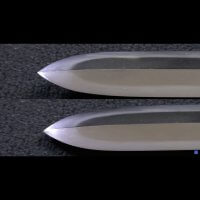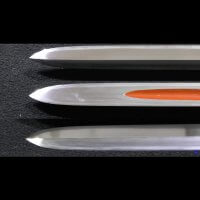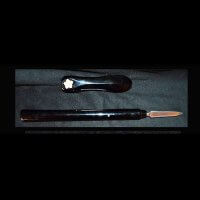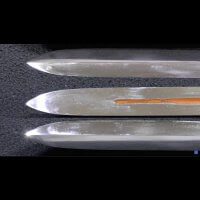Antique Yari
Yari from different eras of Japanese history.
Yari are spear weapons from ancient Japan. They were mainly used for stabbing and were also effective defence weapons against opponents on horseback.
Showing all 4 resultsSorted by popularity
Showing all 4 resultsSorted by popularity
Yari - spear in Japanese
Yari (鎗) is one of Japan's favourite traditional weapons. This versatile lance has been an essential part of Japanese martial arts for centuries and a symbol of strength and discipline.
It is often associated with the famous samurais who perfected their fighting skills with this weapon.
In this text you will learn everything you need to know about Japanese spears, their history, construction, fighting techniques and their cultural influence.
History of the Yari
The origins go back to the Nara period (710-794) back, but it reached its heyday during the Muromachi period (1336-1573). During this period Yari the favoured weapon of the samurai and their foot soldiers, the so-called Ashigaru.
Compared to the sword, the KatanaThe spear had several advantages. It was cheaper to produce, easier to learn and more versatile in battle.
During the Sengoku period (1467-1615)In the 19th century, an era full of warlike conflicts, the yari proved its worth particularly in group battles, where it served as the main weapon in the infantry.
Structure and variations
Japanese spears consist of three main parts: the Bladethe Shank and the Mount.
Each of these components has been manufactured with the utmost care to ensure functionality and durability.
-
The blade
The blade of the yari was forged in a similar way to a sword. It was usually made of high-quality Japanese steel (Tamahagane) and was extremely hot.
However, there were different blade shapes that determined the purpose of the weapon:
- SankakuA triangular blade that was particularly effective against armour.
- JumonjiA blade with two additional side hooks, ideal for catching and disarming an opponent.
- HiraA flat, wide blade for precise and cutting attacks.
-
The shaft
The shaft is usually made of robust wood such as Oak and was often coated with varnish to make it weatherproof.
The length varied depending on the intended use and could be up to six metres. Shorter versions were used in narrower spaces or for riders.
-
The mount
The connection between the blade and the shaft was crucial for stability. Traditionally, the blade was fixed with a metal ring and ropes to prevent it from coming loose in battle.
Fighting techniques with Yari
The art of fighting with this weapon is known as Sojutsu is called. In contrast to sword techniques, where the focus is on precise blows, sojutsu is based on Stitches, punches and blocks.
The most important techniques include
- Tsuki (thrust): A targeted thrust to hit the opponent from a distance.
- Nage (Throw): A technique in which a yari is thrown to attack an enemy further away.
- Harai (block): A sideways strike to deflect the opponent's weapon.
Yari were not only relevant for individual fighters, but also for group formations.
In so-called Yari walls the lances were moved in synchronisation to create an impenetrable barrier against enemy attacks.
Cultural influence of the Yari
They are an iconic part of Japanese history. Nowadays, they are mainly used in traditional martial arts such as Kobudo and modern schools of sojutsu.
The weapon has also found its way into pop culture. In films, series and video games such as "Nioh" or "Sekiro" Yari are often depicted as a symbol of discipline, strategy and strength.
They were also used in historical dramas to emphasise the authentic atmosphere of past eras.
Conclusion
Yari are more than just a weapon - they symbolise the unique combination of craftsmanship, tradition and martial arts in Japan.
With its versatility and efficiency, it not only characterised warfare, but also left a lasting cultural impression.
Whether as a practical tool in historical battles or as an inspiration in modern pop culture, the yari remains a fascinating element of Japanese history.




